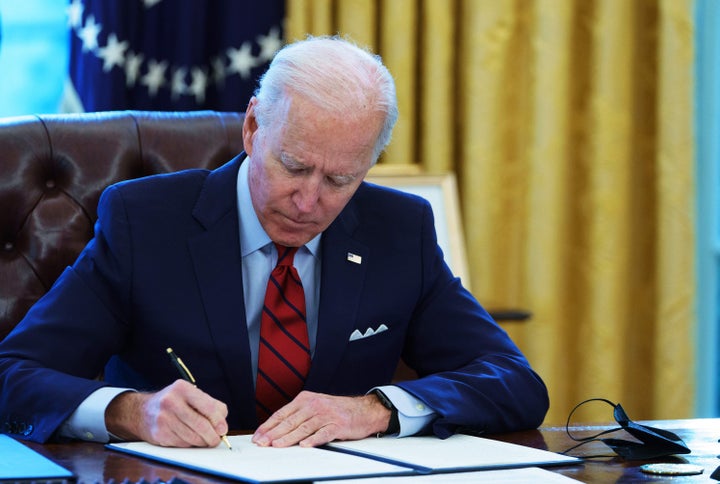Former President Donald Trump did not do federal workers many favors. He instigated a partial government shutdown that left them furloughed for five weeks. He played political games with their annual raises. And he tried to weaken their unions and civil service protections.
President Joe Biden has already sent a very different message as the new boss of the federal workforce.
Biden signed an executive order last Friday repealing three controversial orders from the Trump administration that undermined federal job security and collective bargaining rights. On the same day, he revoked a separate action from Trump that would have converted certain career jobs in the federal government to political positions, so that more people could be hired and fired by political appointees.
On Wednesday, Biden also took a step toward addressing political interference in scientific research, a hallmark of Trump’s tenure that affected federal workers in different agencies. Biden’s plan creates a task force that will spend four months reviewing government policies and identifying cases of partisan meddling. Although the order does little substantively, several researchers applauded it as an important first step in safeguarding scientific integrity.
Overall, the quick actions by Biden signal a new era for federal workers who were buffeted throughout the Trump years. The previous administration tended to equate regular government workers with the so-called “swamp,” happily pushing them out of jobs and even using them as pawns in Trump’s fight with Congress for border wall funding.
Trump’s efforts to hobble federal labor unions, although they gained less attention than furloughs and shutdown threats, were just as significant.
“I would say that it’s night and day.”
- Tony Reardon, president, National Treasury Employees Union
One of his orders would have made it easier to fire federal workers, by gutting their grievance process and giving them less time to improve their performance. Another sought to renegotiate union contracts on a tighter timeline, in hopes of securing agreements on less favorable terms for workers. The third took aim at “official time”: hours that union representatives can devote to union-related issues while on government time.
The American Federation of Government Employees called these initiatives “illegal union-busting.” Union officials saw the trio of executive orders as an attempt to weaken government unions into oblivion, by restricting their powers so much that workers would see no point in being members anymore. (The federal government functions under a ”right to work″ system, in which workers are not obligated to pay fees to unions that represent them.)
Brian Deese, director of Biden’s National Economic Council, told reporters Friday that the repeal of those executive orders would “protect and empower federal employees who dedicate their careers to serving the American people, many in very difficult circumstances in this pandemic.”
The quick reversal of the Trump orders signified a new relationship with the White House, said Tony Reardon, president of the National Treasury Employees Union, which represents 150,000 workers in 33 agencies. Reardon said Biden personally told him during the presidential campaign that he would withdraw the orders if he was elected.

“I would say that it’s night and day,” Reardon said in an interview. “Having those folks who are supportive of federal employees and have a deep respect for the work federal employees do, it’s something I am just incredibly happy about.”
Federal unions sued to stop Trump’s executive orders from going into effect, successfully putting them on hold for a while. But even then Trump managed to carry out some of the same goals through a little-known government body called the Federal Service Impasse Panel, which referees labor disputes between federal agencies and the unions representing workers.
Stocked with Trump appointees, the panel was ruling in favor of management in roughly 90% of the cases it took on, according to an analysis by the union Reardon heads. The panel essentially rewrote a contract at the Department of Health and Human Services, over the union’s objections.
Reardon said the union has asked the Biden administration to go back to the table to negotiate certain contracts, saying the Trump administration did not bargain in good faith. The union also wants Biden to boot Trump’s appointees from the impasse panel, who are not confirmed by the Senate.
“We need qualified appointees who are neutral and fair,” he said.
Federal workers will probably find it easier to secure regular across-the-board raises moving forward, as well. Trump sometimes threatened to institute pay freezes for the federal workforce, though his proposals were often erratic. Before leaving office he called for a 1% annual raise, then revised it to zero.
The 2.6% across-the-board raise federal workers received last year was the largest since 2009. (There was a three-year freeze under former President Barack Obama following the national financial crisis he inherited.)
Democrats hold narrow majorities in both the House and Senate and are more likely than Republicans to advocate for pay increases and improved benefits. Last week, Democratic lawmakers introduced a bill in the House that would expand the paid family leave program for federal workers.
